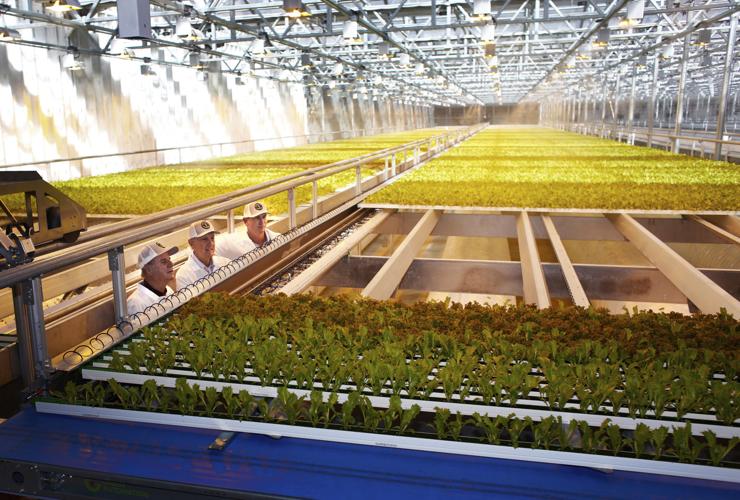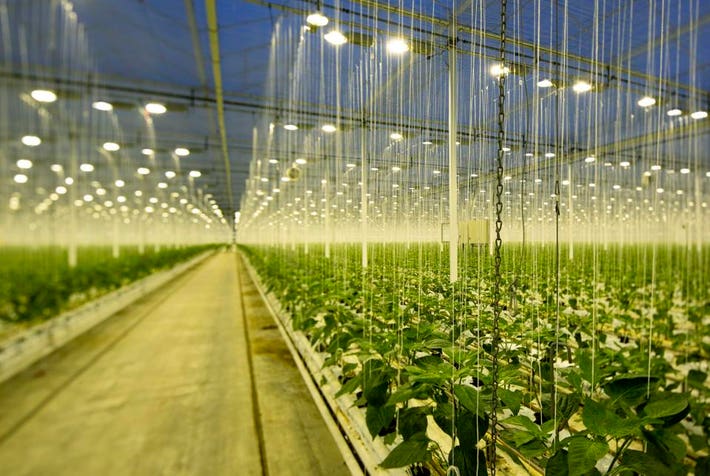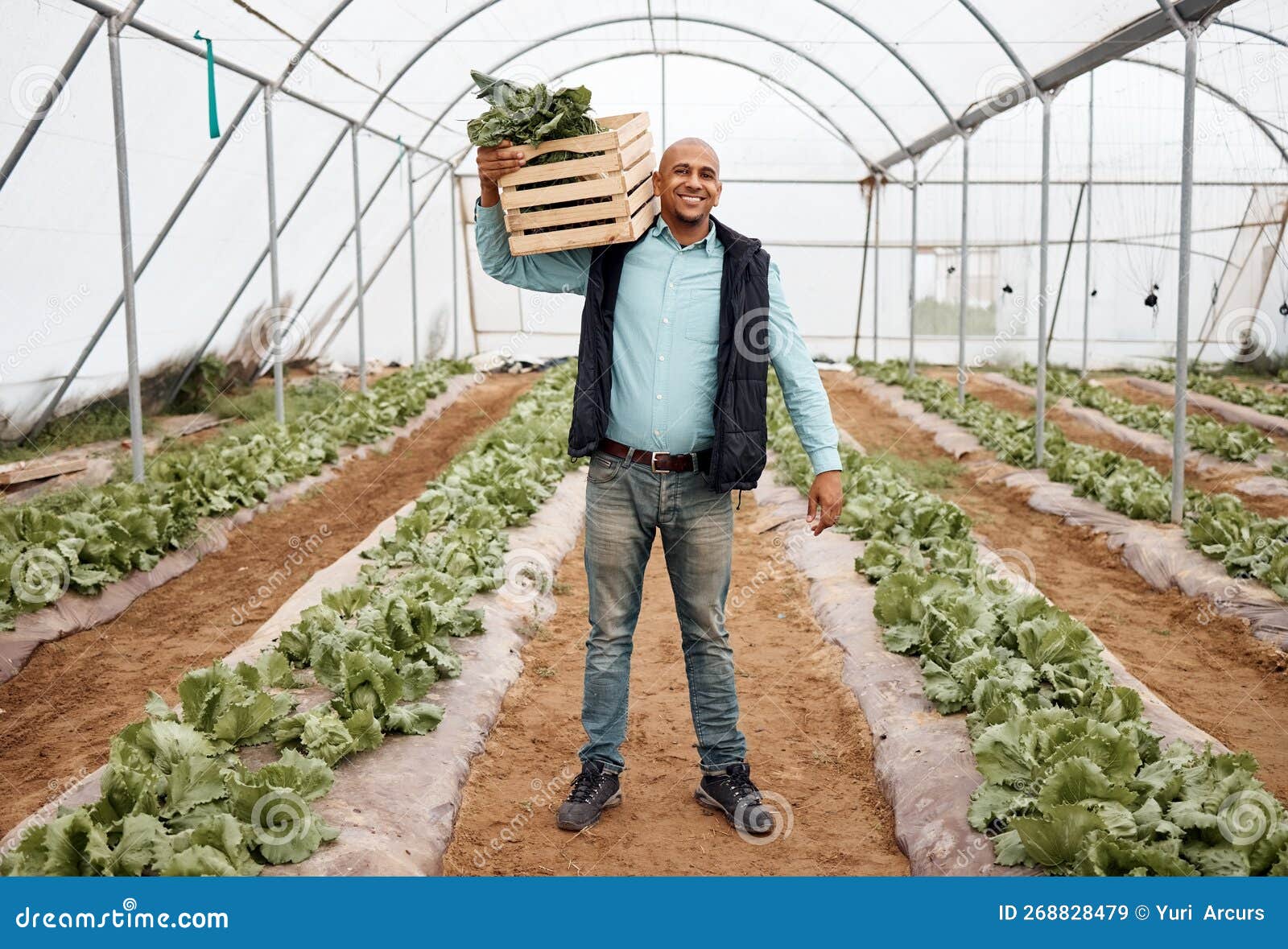Key Takeaways
-
Greenhouses empower you to grow plants year-round, despite the weather outside.
-
Selecting the right greenhouse type and location is crucial for gardening success.
-
Temperature control is the cornerstone of a thriving greenhouse environment.
-
Proper ventilation is as important as temperature regulation for plant health.
-
Sharing your greenhouse successes can inspire and educate others.
Maximize Your Harvest: Greenhouse Growing Mastery
Imagine biting into a crisp, homegrown cucumber in the dead of winter or nurturing a vibrant bouquet of flowers while the world outside is cloaked in snow. That’s the magic of greenhouse gardening – it’s like having a secret key to unlock nature’s restrictions. Here, let’s walk through how you can transform your gardening from a seasonal hobby to a year-round pursuit of freshness and vitality.
Why Greenhouses Offer a Game-Changing Advantage
Most importantly, greenhouses create an oasis for plants. They provide protection from the harsh elements, pests, and diseases. They allow us to manipulate the growing environment to our advantage, leading to healthier plants and more abundant harvests. With a greenhouse, you’re not just a gardener, you become the architect of a micro-ecosystem.
The Basics of Extending Your Growing Season
Extending your growing season is all about understanding and managing the conditions within your greenhouse. The goal is to create a consistent, optimal climate for your plants to thrive beyond their natural outdoor growing cycle. Because you can control temperature, light, and humidity, you can coax your garden into producing fresh veggies and blooms all year long.

“Hydroponic greenhouse in Goochland …” from magicvalley.com
Getting Started with Greenhouse Growing
First things first, let’s talk about setting up your greenhouse. This might seem daunting at first, but with a few simple steps, you’ll be on your way to growing like a pro. And remember, every big project starts with a single step – or in this case, a single seedling!
Choosing the Right Type of Greenhouse
There’s a greenhouse to fit every space and budget. From sprawling glass palaces to compact, lean-to structures, the key is finding the right fit for your gardening dreams and the space you have available. Here’s a quick rundown:
-
Cold Frames: Ideal for beginners, these are mini-greenhouses that work well for hardening off seedlings or protecting a few plants.
-
Starter Greenhouses: These small, often portable, structures are perfect if you’re just dipping your toes into greenhouse gardening.
-
Hoop Houses: With their large, curved structure covered in plastic, they offer a more affordable solution for larger plant collections.
-
Panel Greenhouses: These sturdier options provide better insulation and can withstand harsher conditions, making them great for serious gardeners.
Think about what you want to grow and how much you want to grow. This will guide you in choosing the greenhouse that’s just right for you.
Strategic Location Selection for Maximum Sun Exposure
Where you place your greenhouse can make all the difference. You’ll want to look for a spot that gets at least six hours of sunlight a day, especially during the shorter days of winter. A south-facing location is typically the best choice. Shield your greenhouse from strong winds with natural barriers like trees or fences to prevent damage and reduce heat loss.
Remember, you’re not just placing a structure, you’re setting the stage for a whole ecosystem to flourish. So take your time and choose wisely!
Controlling the Greenhouse Climate
Once your greenhouse is in place, the real fun begins. You’ll need to create the perfect environment for your plants to thrive. This means managing the temperature, which is like setting the thermostat for success.
Regulating Temperature for Optimal Plant Growth
Plants are picky about their temperature, and in a greenhouse, you’re in control. In the cooler months, you might need to introduce heat to keep your green darlings cozy. Conversely, during the peak of summer, shading and evaporative cooling might be necessary to prevent your plants from getting a heatstroke.
For example, tender greens like lettuce prefer cooler temperatures, around 60-70°F, while warm-season crops like tomatoes will thrive when it’s a bit hotter, around 75-85°F.
Invest in a good quality thermometer, or better yet, a thermostat that can automate heating and cooling for you. This small step can save you a lot of time and worry in the long run.
Importance of Ventilation and Humidity Control
Just like us, plants need to breathe. Proper ventilation in a greenhouse is crucial, it helps manage humidity, ensures a supply of fresh air, and keeps temperatures from getting too high. Think of it as the lungs of your greenhouse. Automatic vent openers can be a gardener’s best friend, opening when it gets too hot and closing when it cools down, all without you having to lift a finger.
And let’s talk about humidity. While some plants love a tropical vibe, too much moisture can invite diseases and pests. Use a hygrometer to keep an eye on humidity levels and adjust by increasing ventilation or using a dehumidifier if necessary. Remember, the goal is balance.
Advanced Growing Techniques
As you become more comfortable with the basics, you might want to try out some advanced growing techniques. These can help you maximize yield, save space, and even save water. Let’s explore a couple of these exciting methods.

“High-Tech Greenhouses Could Be The …” from www.forbes.com
Vertical Gardening to Maximize Space
Vertical gardening is a real space-saver. It involves growing plants upwards on trellises, shelves, or hanging systems. This not only increases your growing area but can also make tending to your plants easier on your back. Here’s how to get started:
-
Choose plants that are naturally climbers or can be easily trained to grow upwards, like tomatoes, peas, and some varieties of squash.
-
Install sturdy supports that can handle the weight of mature plants.
-
Use garden ties or soft twine to gently guide and secure your plants as they grow.
Vertical gardening not only optimizes space but also adds an eye-catching dimension to your greenhouse that’s sure to impress anyone who peeks inside.
Hydroponics: Soil-less Cultivation Within Greenhouses
Hydroponics is the art of growing plants without soil. Instead, plants are nurtured with nutrient-rich water, allowing them to grow faster and with less risk of soil-borne diseases. It might sound high-tech, but with a basic setup, even beginners can enjoy the benefits of hydroponic gardening. Plus, it’s a water-wise choice since the systems recycle water continuously.
Season-Extending Cultivation
One of the most significant advantages of a greenhouse is the ability to extend your growing season. This means you can start plants earlier in the spring and keep them going later into the fall or even through the winter. To make the most of this, you’ll need to know which plants to grow and when to grow them.
Selecting Plants for Year-Round Greenhouse Production
Not all plants are created equal when it comes to greenhouse cultivation. Some are better suited to the controlled environment of a greenhouse than others. Here are a few that thrive:
-
Leafy greens like lettuce, spinach, and kale can be grown almost year-round.
-
Herbs such as basil, cilantro, and parsley are perfect for the consistent temperatures of a greenhouse.
-
Cold-tolerant veggies like carrots and radishes are ideal for the cooler months.
-
Warm-season crops, including tomatoes, cucumbers, and peppers, love the summer-like conditions you can maintain.
By choosing the right plants, you can enjoy a bounty of fresh produce no matter the season outside.
Transitioning Plants for the Seasonal Change
As the seasons change, so should your greenhouse. In the spring, focus on starting seedlings and preparing for the summer crop. As fall approaches, it’s time to switch gears and plant cold-hardy varieties that will keep your green thumb busy in the colder months. Here’s a tip: use row covers inside your greenhouse to give your plants an extra layer of warmth when the temperatures start to dip.
Plant Health and Maintenance
Keeping your plants healthy and happy is key to a successful greenhouse. This involves regular check-ups, just like you would with any other beloved member of your family. Learn more about plant health monitoring to ensure the well-being of your greenhouse plants.
Integrated Pest Management in Greenhouses
Pests can be a real headache, but with integrated pest management (IPM), you can keep them at bay without resorting to harsh chemicals. IPM is a sustainable approach that combines different methods like biological control (using natural predators), cultural practices (keeping your greenhouse clean), and physical barriers (like insect netting). It’s all about working with nature, not against it.
Nutrient Management for Healthy Plants
Plants, like people, need the right diet to grow strong. Nutrient management is about providing your plants with the right balance of fertilizers at the right time. Test your soil or growing medium regularly to know what nutrients are needed and keep a close eye on your plants for signs of nutrient deficiencies or excesses. Healthy plants are better at fending off pests and diseases, so this step is crucial.
Harvesting Your Greenhouse Crops
Harvest time is the most rewarding part of greenhouse gardening. It’s when you get to enjoy the fruits of your labor – literally!

“Farmer, Portrait and Harvesting …” from www.dreamstime.com and used with no modifications.
Knowing When and How to Harvest for Peak Freshness
Harvesting at the right time ensures your produce is at its most flavorful and nutritious. Most veggies are best picked early in the morning when they’re crisp from the night’s coolness. For peak freshness, harvest leafy greens before they start to bolt and pick tomatoes when they’re just the right shade of red. Timing is everything.
Storing and Preserving Your Greenhouse Bounty
Unless you’re feeding a small army, you’ll likely have more produce than you can eat right away. Storing and preserving your harvest allows you to enjoy it long after it’s been picked. Cool, dark places are best for storing root veggies, while canning, freezing, and drying are great ways to preserve fruits, herbs, and vegetables for future use.
Sharing the Knowledge: Why You Should Tell Others
Sharing your greenhouse successes does more than just spread the word, it inspires others to start their own gardening adventures. When you share your knowledge and experiences, you’re helping to build a community of gardeners who support and learn from each other.
The Joy of Year-Round Gardening: Share and Inspire
Gardening isn’t just a hobby, it’s a way of life. By sharing your story, you can show others the joy of harvesting a crisp salad in the middle of winter or the satisfaction of growing your own herbs for cooking. And who knows? Your story might just be the nudge someone needs to start their own greenhouse journey.
Extend the Joy: Share how Greenhouses Impact Food and Flower Production
So, why keep all that goodness to yourself? Spread the joy and share your greenhouse growing tips with friends, family, and fellow gardeners. And if you’re looking for more in-depth guidance, check out this comprehensive Greenhouse Growing Guide for Beginners. It’s packed with cultivation tips, setup advice, and a planting schedule to get you started.
The Joy of Year-Round Gardening: Share and Inspire
There’s something truly special about walking into your greenhouse and being greeted by lush plants, no matter what the weather is doing outside. It’s a feeling of accomplishment and self-sufficiency that comes from knowing you’ve cultivated life through the seasons. But the joy doesn’t stop at the greenhouse door. Sharing your experiences can inspire others to take up gardening, which in turn cultivates a healthier, greener community.
Extend the Joy: Share how Greenhouses Impact Food and Flower Production
Greenhouses have revolutionized the way we grow food and flowers, making it possible to produce fresh, local produce all year round. They offer a sustainable solution to food production, especially in urban areas where space and good soil are limited. By sharing how your greenhouse has impacted your food and flower production, you can encourage others to consider the benefits of greenhouse gardening. Whether it’s through social media, community workshops, or simply chatting with your neighbor over the fence, spreading the word can have a ripple effect that extends far beyond your own backyard.
Imagine the impact if more people grew their own food or flowers. We’d see a reduction in food miles, a greater appreciation for seasonal eating, and a boost in local biodiversity. Your greenhouse isn’t just a source of personal joy, it’s a potential catalyst for environmental and social change.
Community Growth: Invite Others to Learn from Your Greenhouse Experience
One of the best ways to share your passion for greenhouse gardening is to invite others into your space. Show them the ropes, share your tips and tricks, and let them experience the satisfaction of harvesting something they’ve helped to grow. You could even start a community seed exchange or host a plant swap. These are wonderful ways to build connections and share the wealth of knowledge you’ve accumulated.
And remember, every gardener was once a beginner. Your encouragement could be the support someone needs to embark on their own gardening journey. So don’t be shy—open up your greenhouse doors and let the community in!
Ready to expand your growing knowledge? Check out this comprehensive Greenhouse Growing Guide for Beginners to dive deeper!
If you’re ready to take your greenhouse growing to the next level, or if you’re just starting out and looking for guidance, there’s a wealth of information waiting for you. From choosing the right structure to understanding the nuances of plant care, a comprehensive guide can be an invaluable resource. So why not deepen your knowledge and become even more proficient at extending the growing season and maximizing cultivation in your greenhouse?
By learning more, you not only improve your own gardening experience but also equip yourself to share more effectively with others. Knowledge is power, and in the world of greenhouse gardening, it’s the power to grow, to inspire, and to connect with the earth and those around you.
Frequently Asked Questions
Now, let’s tackle some common questions that might arise as you delve into the world of greenhouse gardening. These are the inquiries I hear most often, and I’m here to provide you with clear, concise answers.
What is the best way to control temperature in my greenhouse?
Controlling temperature in your greenhouse is all about balance. During the day, venting can help release excess heat, while at night, insulating blankets or a heater might be necessary. Here’s a simple checklist to help you manage temperature effectively:
-
Install a reliable thermometer to monitor the temperature.
-
Use automatic vent openers to regulate heat without constant supervision.
-
Consider shade cloths for scorching summer days.
-
Invest in a heating system for those chilly nights.
Remember, each plant has its own temperature preference, so tailor your environment to the needs of your crops for the best results.
Can I use a greenhouse for growing organic produce?
-
Absolutely! A greenhouse is a perfect environment for growing organic produce. You can control inputs and avoid synthetic pesticides and fertilizers.
-
Focus on building healthy soil with organic compost and natural amendments.
-
Implement integrated pest management (IPM) to handle any pest issues that arise.
-
Choose organic seeds and seedlings to ensure your garden is truly organic from the start.
With a bit of planning and attention to detail, your greenhouse can become an organic oasis.
How can I maximize plant growth with limited greenhouse space?
Maximizing space in your greenhouse is all about being smart with your layout and using vertical space. Here are some strategies:
-
Install shelving or hanging baskets to take advantage of vertical space.
-
Use trellises to guide vining plants upwards.
-
Practice succession planting, where you plant new crops as soon as one is harvested.
With these techniques, even the smallest greenhouse can produce an impressive yield. For those interested in optimizing their cultivation space, consider exploring this comprehensive microgreens growing guide for more detailed strategies.
What are some easy-to-grow plants for beginner greenhouse gardeners?
Starting with easy-to-grow plants can boost your confidence and give you quick wins. Here are a few to consider:
-
Lettuce and other leafy greens, which can be harvested multiple times.
-
Herbs like basil and parsley, which thrive in the consistent conditions of a greenhouse.
-
Radishes, which grow quickly and don’t need much space.
-
Tomatoes, which are a bit more challenging but incredibly rewarding.
These plants are forgiving and will give you a taste of success as you learn the ropes of greenhouse gardening.
